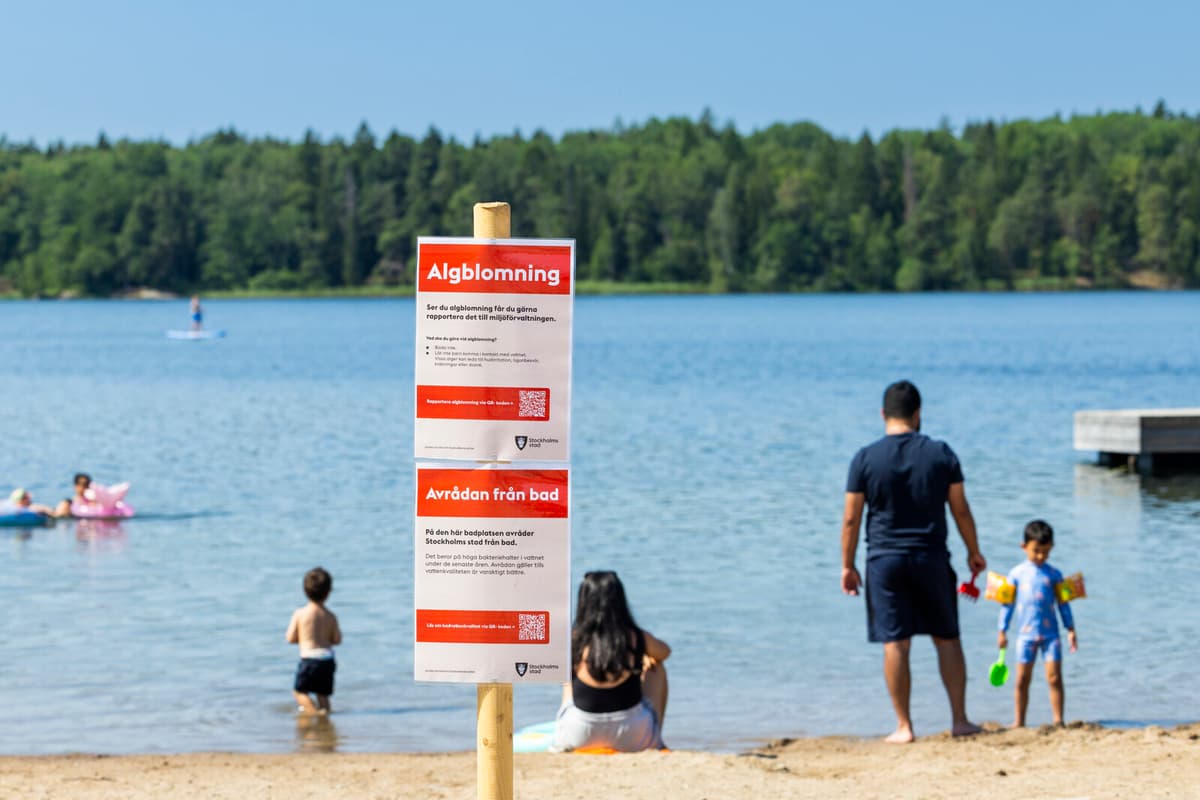From the coastal area south of Stockholm, Valdemarsvik and Nynäshamn, algal blooms have been seen by private individuals, and along the east side of Gotland, algal blooms are drifting in from the Baltic Sea, according to SMHI's satellite monitoring.
To those I've spoken to on Gotland, I've said that if possible, they can bathe on the west side instead of the east side. It seems that there may be more problems on the east side where more algal blooms are drifting in, simply put, says Marie Johansen.
One should have respect for these blooms. I recommend that you do not go out and bathe if you think the water looks very cloudy.
Just got started
Johansen emphasizes that SMHI has a comprehensive picture and is dependent on reports from the public to know what it looks like at the local level, but more people are testifying that the algal bloom has started.
But at sea, SMHI's picture is more complex. There, surface accumulations of cyanobacteria, i.e. one of the most common bacteria in what is algal blooms, can be seen in large parts of the Baltic Sea and the northern Bothnian Sea, the Archipelago Sea and the Gulf of Finland.
It's hard to say if it's unusually much algal blooms this year since it's just gotten started, but it doesn't seem to be little algal blooms this year, says Marie Johansen.
Rashes and stomach problems
Algal blooms occur when phytoplankton and cyanobacteria multiply en masse. This usually happens in the summer when it's warm and light and can cause a blue-green discoloration of the water. In the Baltic Sea, algal blooms occur every year, but it's too early to say how extensive it will be.
Algal blooms can cause rashes and skin irritation as well as stomach problems such as diarrhea and vomiting. In rare cases, algal blooms have caused severe poisoning, especially in small children and dogs that swallow contaminated water.
Algal blooms have different colors and appearances depending on their size and species. Blue-green algal blooms in the Baltic Sea often look like greenish-yellow soup or blue-green stringy masses. The toxicity varies between different species.
If you bathe in water with algal blooms, you should try to avoid swallowing any water. It's also good to shower afterwards.
Poisoning from algal blooms can cause symptoms such as nausea, vomiting, diarrhea, and fever. You can also get skin irritations and eye problems. It is recommended to contact a doctor.
Children and animals can be particularly vulnerable during algal blooms.
Sources: SMHI and the World Nature Fund






